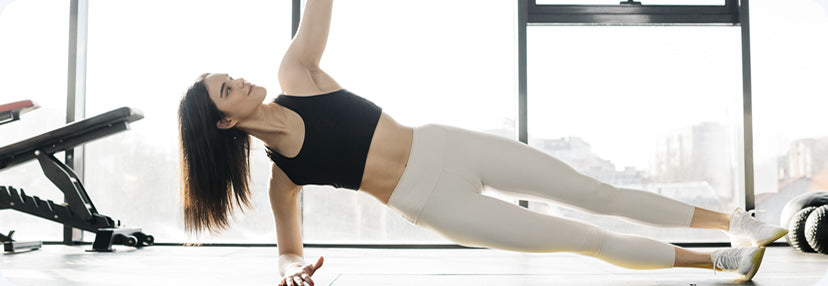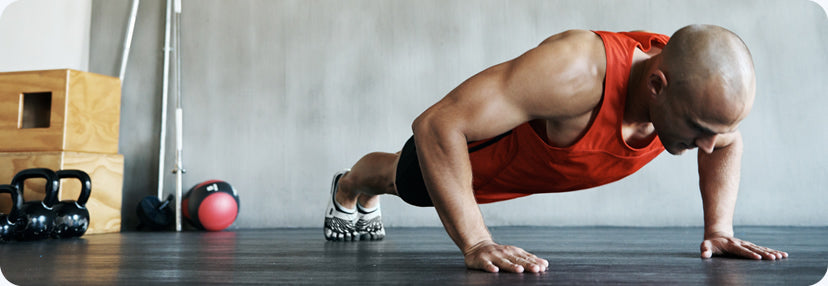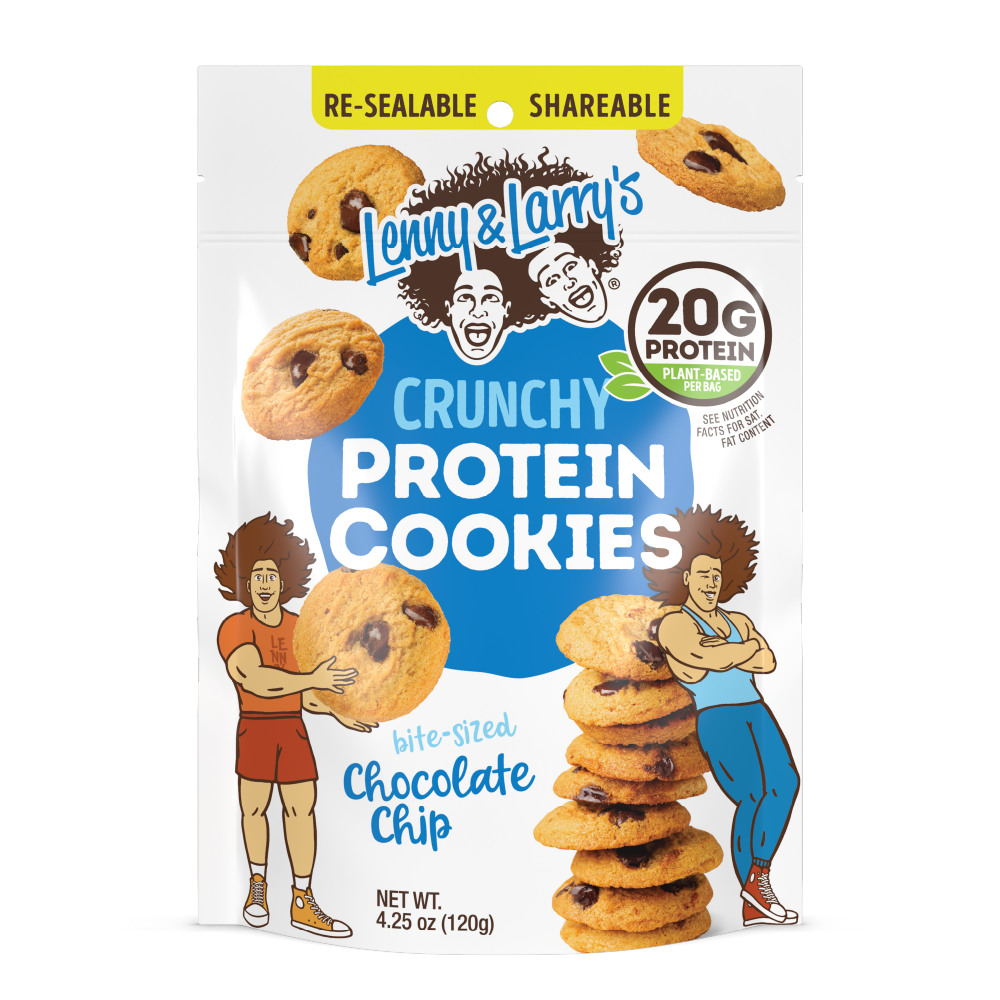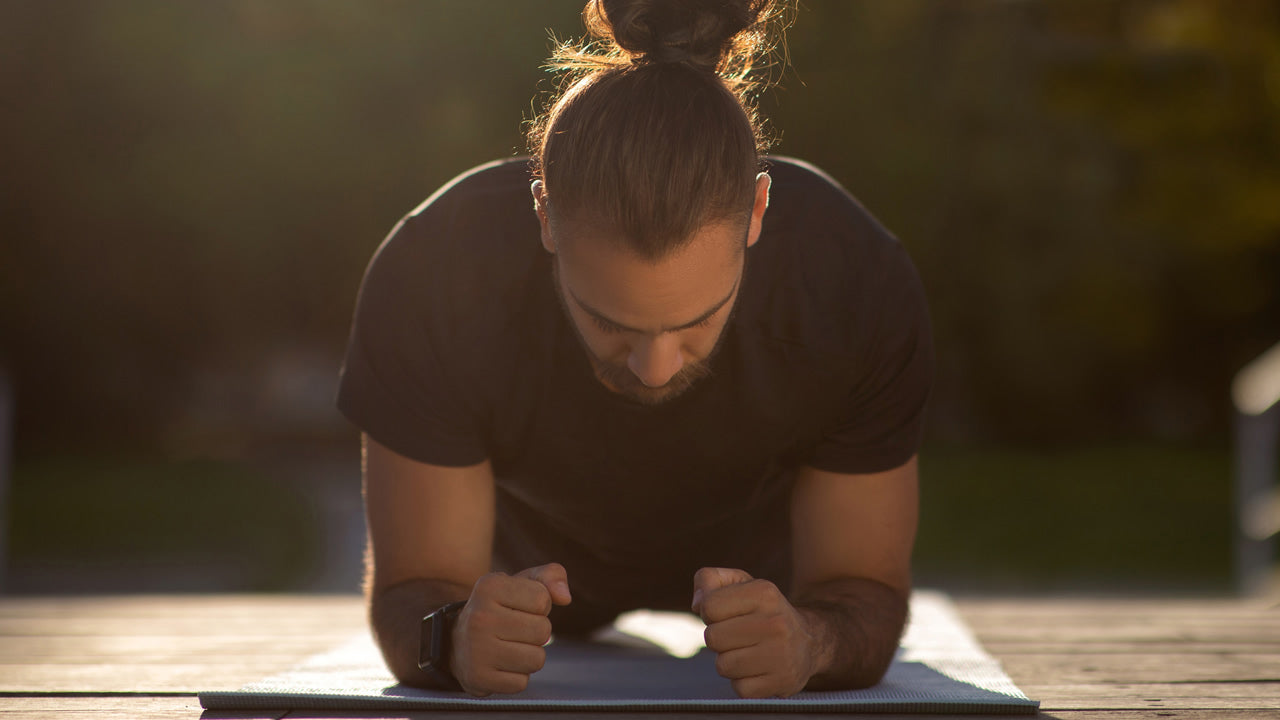Building a robust core is more than just aiming for the visual appeal of sculpted abs; it's about fortifying your body for enhanced performance, stability, and injury prevention.
Your core is the bedrock on which nearly all movements rely, and strengthening this crucial area involves more than the occasional crunch or sit-up. Here are five trending exercises (at the start of 2024) that promise to challenge and transform your core.
1. Deadlifts: A Foundational Exercise for Core Strength & Stability
The deadlift challenges and develops core strength alongside full-body engagement.

The Compound Power of Deadlifts
Deadlifts are celebrated for their comprehensive ability to engage multiple muscle groups across the body, making them a cornerstone exercise in strength training. Unlike isolated exercises that target specific areas, deadlifts call upon the core, back, legs, and arms to work together.
Deadlift Instructions
- Starting Position: Stand with your feet hip-width apart, with the barbell over the center of your feet. Bend at your hips and knees, ensuring your shins touch the bar.
- Grip and Posture: Grasp the barbell with your hands just outside your legs, employing an overhand grip. Keep your back straight, chest up, and shoulders slightly in front of the bar.
- The Lift: Drive through your heels, extending your hips and knees to stand up, keeping the bar close to your body. Your hips and shoulders should rise at the same rate.
- The Descent: Lower the bar by bending at the hips and guiding it to the ground, maintaining a straight back throughout the movement.
Why the Deadlift? A List of the Deadlift's Core Benefits
- Enhanced Core Stability: By engaging the entire core, including the abdominal muscles and the muscles surrounding the spine, deadlifts build a foundation of stability that works well for daily activities and athletic/sports performance.
- Full-Body Conditioning: The complete muscle engagement promotes improved posture, better balance, and increased muscle mass.
- Injury Prevention: Regularly incorporating deadlifts into your workout routine can fortify your body against injuries by improving overall strength and ensuring your core can effectively support the spine.
Deadlifts performed correctly showcase how core stability aids overall fitness. You will feel core benefits and overall performance improvements as you incorporate deadlifts.
2. Planks: Classic, Side, and Reverse Crunch Planks
Plank variations are a staple in core conditioning and promote endurance while engaging multiple muscle groups.
Three Versatile Plan Exercises
By introducing variations such as the side plank and reverse crunch, you activate different areas of the core. Planks provide a well-rounded strengthening regimen that is beneficial for developing core strength while enhancing balance throughout the body.

A. Classic Plank Instructions
- Start Position: Begin in a push-up position but with your forearms on the ground, elbows directly below your shoulders, and legs extended behind you.
- Execution: Engage your core, ensuring your body forms a straight line from head to heels. Hold this position, keeping your gaze down and neck neutral.
- Duration: Aim for 30 seconds to 1 minute, gradually increasing as your endurance improves.

B. Side Plank Instructions
- Start Position: Lie on your side with your legs extended, propping your body up on your forearm, elbow directly under your shoulder.
- Execution: Lift your hips off the ground, forming a straight line from head to feet. Hold this position with your free hand on your hip or extended upwards.
- Duration: Maintain the position for 30 seconds to 1 minute, then switch sides.

C. Reverse Crunch Instructions
- Start Position: Lie on your back with your hands at your sides or under your glutes for support, knees bent, and feet lifted to a 90-degree angle.
- Execution: Contract your abs to curl your hips off the floor, bringing your knees towards your chest. Slowly lower back to the start position.
- Repetitions: Perform 8-12 repetitions, focusing on the quality of movement over speed.
Why Planks? A List of Core Benefits Resulting From Planks
- Core Endurance: These exercises demand sustained muscle contraction, improving overall stamina and resilience.
- Targeted Muscle Engagement: Each variation stimulates different core muscles, including the obliques, rectus abdominis, and the muscles supporting the spine.
- Functional Stability: Planks lead to improved stability and performance.
These plank variations are an effective strategy for developing a stronger core. The more repetitions, the more core growth.
3. Hollow Rock: Core Conditioning
The Hollow Rock's strength is utilizing controlled, rocking movement to build core stability.
The Hollow Rock Origins in Gymnastics
The hollow rock exercise originates from gymnastics, where a strong and stable core is required. It involves maintaining a rigid, hollow body position while rocking back and forth. This exercise is renowned for its effectiveness in engaging the entire core, including the deep abdominal muscles, without the need for any equipment.
Hollow Rock Instructions
- Start Position: Begin by lying flat on your back with your arms extended overhead and legs straight. Contract your abdominals to press your lower back into the floor.
- Enter the Hollow Position: Lift your legs, arms, and shoulders off the floor, reaching your hands towards your feet, creating a slight "U" shape with your body. Your lower back must remain in contact with the ground throughout the exercise.
- The Rock: Initiate a rocking motion by using your core muscles to generate momentum. The movement should be smooth and controlled, with your body rocking back and forth without bending at the hips or shoulders.
- Maintain Form: Concentrate on keeping your body tight and movements minimal. The key is to rock through the balance on your lower back, not by wildly swinging your arms and legs.
Why the Hollow Rock? A List of Hollow Rock's Core Benefits
- Core Strength: Regular practice of the hollow rock significantly increases core strength by engaging the muscles against dynamic movement.
- Improved Posture and Balance: Hollow rock contributes to better posture and balance.
- Carryover to Compound Exercises: A strong core established through hollow rock exercises can improve performance in compound exercises like squats, deadlifts, and overhead presses.
Incorporating the hollow rock into your workout routine can be a game-changer. Consistency with this exercise is incredibly vital.
4. Push-Ups: Upper Body & Core
Push-ups are a quintessential exercise that targets the upper body and the core.

The Dual Benefits of Push-Ups
Push-ups are a highly efficient bodyweight exercise that engages multiple muscle groups simultaneously. Push-ups challenge the core muscles in concert with the chest, shoulders, and triceps by requiring torso stabilization. This comprehensive engagement makes push-ups an invaluable exercise now, then, and moving forward.
How To Do Push-Ups (Instructions)
- Starting Position: Begin in a high plank position with your hands planted firmly on the ground, slightly wider than shoulder-width apart. Your body should form a straight line from your head to your heels.
- Engage Your Core: Tighten your core by pulling your belly button towards your spine, keeping your body rigid throughout the movement.
- Lower Your Body: Bend your elbows to lower your body towards the floor. Aim to keep your elbows at a 45-degree angle to your body to maximize engagement and reduce strain on your joints.
- Press Up: Push through your hands to raise your body back to the starting position, maintaining a straight line with your body.
Why Push-Ups? Push-Up's Core Benefits
- Lower Core Stability: The act of stabilizing your body during a push-up strengthens the abdominal muscles, lower back, and obliques.
- Increased Upper Body Strength: Regular push-up activity increases upper body strength and function.
- Versatility and Convenience: Push-ups require no equipment and can be modified to increase or decrease difficulty, making them a versatile exercise for all fitness levels.
Whether you're a fitness novice or an experienced athlete, the humble push-up offers a path to achieving a more balanced and powerful physique.
5. Glute Bridges: Core Strength & Posture
This exercise is accessible, effective, and can be performed anywhere, making it a favorite among fitness enthusiasts and professionals.

The Importance of Strong Glutes
The glutes are among the largest and most powerful muscles in your body. They contribute to a range of movements and support the pelvis and spine. Strong glutes are essential for maintaining proper posture and alignment, reducing the load on the lower back.
Instructions for Glute Bridges
- Starting Position: Lie on your back with your knees bent, feet flat on the floor, and arms by your sides. Your feet should be hip-width apart and close enough to your buttocks that you can touch your heels with your fingertips.
- The Lift: Engage your core and glutes to lift your hips towards the ceiling. At the top of the movement, your body should form a straight line from your shoulders to your knees.
- Hold and Lower: Hold the bridge position for a couple of seconds, then slowly lower your hips back to the starting position without fully resting on the floor between reps.
Note: For an added challenge, glute bridges can be performed with weights placed on your hips or by extending one leg at a time.
Why Glute Bridges? Glute Bridges' Core Benefits.
- Enhanced Lower Back Stability: Strong glutes support the lower back, reducing strain and preventing potential back pain.
- Improved Posture: By strengthening the posterior chain, glute bridges help counteract the effects of prolonged sitting and other inactivities that can lead to poor posture.
- Better Athletic Performance: A strong glute foundation contributes to power and efficiency in running, jumping, and similar movements.
Glute bridges are a simple yet powerful exercise with wide-ranging benefits for core strength, stability, and posture.
That's a Wrap on The Top 5 Exercises to Strengthen Your Core.
Incorporating these top five exercises into your fitness routine offers a strategic approach to building a stronger, more resilient core. From the comprehensive, full-body engagement of deadlifts to the precise, stabilizing effect of glute bridges, each exercise targets the core from a differing but unique angle. Plank variations and the dynamic hollow rock exercise enhance core endurance, while push-ups serve double duty by bolstering upper body strength alongside core stability.
Together, these exercises form a well-rounded core workout that supports improved posture, enhanced performance, and reduced risk of injury. But consistency is crucial, and always (always) consult your healthcare professional before going too hard in the paint.
 Lenny and Larrys
Lenny and Larrys
